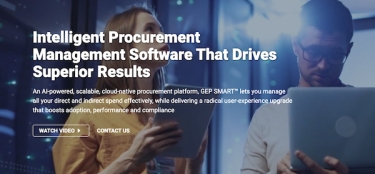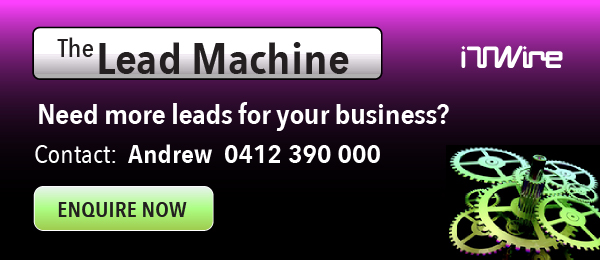One of the leading drivers behind this shift is the creation of procurement software, which has changed how organizations manage their spending and relationships with suppliers. These practical tools have simplified procurement procedures, allowing businesses to make informed choices, negotiate better deals, and optimize supply chains.
Moreover, process automation and digital procurement strategies have become even more important aspects of the procurement transformation journey. Organizations can automate their day-to-day tasks by leveraging the latest technologies, freeing their procurement teams up for strategic moves.
Leading providers like GEP have played a pivotal role in driving this transformation. A wide array of solutions, from contract management to spend analysis, enables these vendors to help organizations realize the full potential of their purchasing processes.
Automation and Enhanced Efficiency
Procurement software has completely transformed the way businesses carry out their buying activities. This technology's various advantages improve efficiency across all stages of the procurement cycle.
The significant benefit of procurement automation is going paperless throughout the procurement cycle. Traditional approaches involve manual data entry, handling physical documents, or extensive emails, leading to errors or delays. Automated procurement solutions work by digitizing such methods, reducing human error risks and ensuring consistency across all organization units.
In addition, such systems' real-time tracking and reporting features enable companies to oversee expenditures at any given time, identify bottlenecks along the realization chain, and make decisions based on fresh information. This level of transparency is crucial for spending control and proper expense management.
Procurement automation also leads to efficient workflows. For instance, when you automate tasks like requisition approvals, purchase order generation, and supplier communication, you can reduce the time-consuming bureaucratic procedures and hasten the purchasing process.
Improved Supplier Management
Supplier performance management is critical in procurement and can be significantly improved by employing the software. By evaluating advanced supplier performance metrics, organizations can track a given supplier's on-time delivery, quality, or compliance levels, which allows for the identification of best-performing suppliers as well as areas that need improvements.
This kind of software provides centralization through which suppliers can communicate with buyers. Consequently, information exchange is made more accessible, increasing transparency among various stakeholders. This makes it convenient for buyers and sellers to share documents related to their business dealings while working together using the same platform.
Moreover, such systems assist in automating supplier onboarding guarantees, ensuring that all new entries meet the organization's policy expectations. This makes work easier for both parties, saves time, and reduces risks associated with non-compliant vendors.
Risk Mitigation
Procurement risk management is an essential component of contemporary business. Organizations must, therefore, have solid systems that help them identify and manage risks as supply chains become more intricate and regulatory environments become stricter.
The software helps companies comply with applicable regulations and industry standards, ensuring that all procurement activities follow laws and ethical requirements. This software can also bring enormous benefits to contract management. Firms can avoid the risks of missed deadlines, unauthorized changes, or non-compliance with contractual obligations.
The software can monitor spending patterns, supplier performance, and budget adherence. Transparency enables organizations to pinpoint areas where there may be potential hazards. Due to the high vulnerability of procurement processes to fraudulent activities, fraud detection is one of the most vital parts of procurement risk management. By identifying potential fraud early enough, an organization can take necessary measures to avoid financial losses and harm to its reputation.
Data-Driven Approach
In today's fast-paced business environment, data-driven decision-making has become crucial for organizations seeking to optimize their procurement operations and drive cost savings.
Modern procurement solutions have core features that include purchasing analytics, which assist businesses in conducting comprehensive spend analysis across various categories, suppliers, or locations. By looking at several sources of purchase data from different locations, a company can point out overspending areas, making it easier for them to negotiate better terms with suppliers, thus streamlining their procurement processes.
Procurement report tools provide real-time visibility into KPIs (Key Performance Indicators), contract compliance levels, and supplier risk factors. This enables companies to control supplier relationships, minimize risks, and maintain procurement policies and regulations. Procurement intelligence allows the firm to anticipate supply chain disruptions and take action against them.
Flexibility and Scalability
Procurement software offers unparalleled flexibility and scalability, making it ideal for businesses of all sizes. Organizations can access their procurement solutions from anywhere, at any time. This mobile procurement capability enables remote access, enabling a seamless process flow across different locations and enabling procurement teams to work harmoniously.
Furthermore, it provides businesses with cost-effective, scalable software that meets their growing needs as they expand in size and change their acquisition requirements. As a company expands or alters its procurement requirements, it can quickly scale up or down without investing heavily in hardware upgrades or complex software installations.
The software's flexible deployment options also eliminate the need for on-premises infrastructure, reducing the burden on IT resources and minimizing upfront capital expenditures. It does not require sophisticated hardware installation or upgrading, allowing organizations to adapt quickly to market dynamics and streamline purchase processes.
Cost Savings
Implementing the software can lead to substantial cost savings for businesses, making it one of the most compelling reasons to invest in such a solution. This offers many opportunities to reduce costs and maximize return on investment (ROI) by streamlining processes, improving negotiation leverage, and enhancing inventory management.
Process optimization is one of the main ways this kind of software helps reduce costs. For instance, automating and standardizing procurement workflow results in various improvements, such as eliminating inefficiencies, reducing manual errors, and eliminating redundant tasks. In addition, enhanced negotiation leverage, among other things, makes such an acquisition program very powerful for bargaining purposes; this directly affects a company’s bottom line, leading to substantial savings on costs.
This software allows businesses to have more control over spending. Organizations can identify and remove unnecessary expenses, ensuring that each dollar is spent wisely, by enforcing compliance with procurement policies, implementing approval workflows, and providing detailed spending analysis.
Firms must seek creative solutions to gain a consistent competitive advantage in today's fast-paced business environment. One such solution that has proved invaluable is adopting procurement software. These sophisticated platforms empower businesses to achieve greater efficiency, cost savings, and strategic decision-making by streamlining and optimizing the procurement process.










































